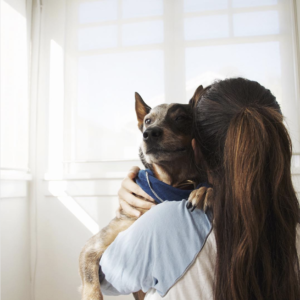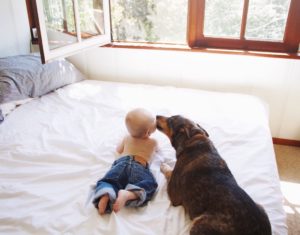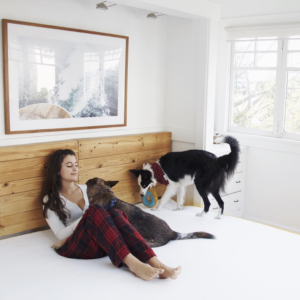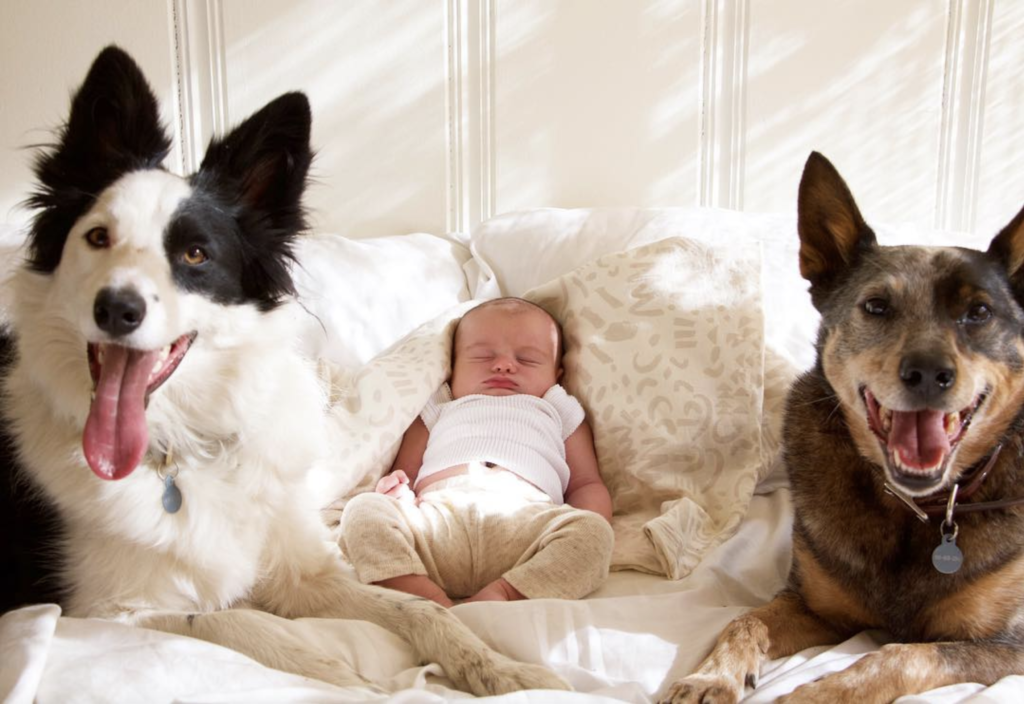I remember the day we brought our first little one home. It was a Sunday in late September and he was so tiny. We climbed the stairs next to the used bookstore we lived above in San Francisco with him asleep in my arms, blissfully unaware of what was to come. It was an adjustment for all of us during those early days, but pretty soon we were going on long walks through the neighborhood together, taking leisurely car rides with the windows down, and spending sunny afternoons playing in the grass at the park. If you haven’t guessed it by now, I’m talking about my dog Jack, an Australian cattle dog rescue, and my best friend.
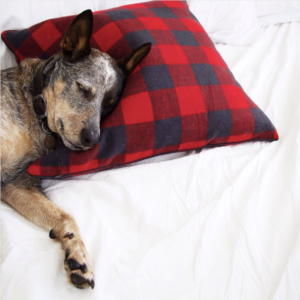
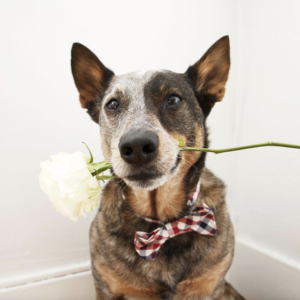
Fast forward to eight years, a move to the suburbs, and one precocious Border Collie later, and my partner and I found ourselves bringing home another new little one – human this time. We had always wanted a zoo – an off-beat mix of animals and humans coexisting together in some sort of functionally chaotic utopia. The idea of which we learned, was much more romantic in theory than in practice…at least in the beginning. I don’t think I’ll ever forget standing in the corner of our kitchen a few days after bringing our daughter, Ever, home and idly waiting for a bagel to finish toasting with tears in my eyes.
“We were in the thick of it and I wanted so badly for everyone (myself included) to be back to the happy, comfortable, fun existence we had been living before she arrived.”
Seven months in and the days of crying by the toaster oven have long since passed and our house is now the big, happy, functioning – yet- crazy at times, zoo we had envisioned. I thought since the learning curve can be steep when introducing a new baby to your dog, that I would share a few of the most important things I’ve learned along the way.
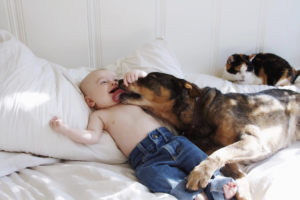
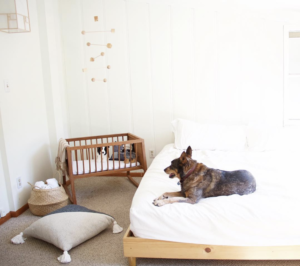
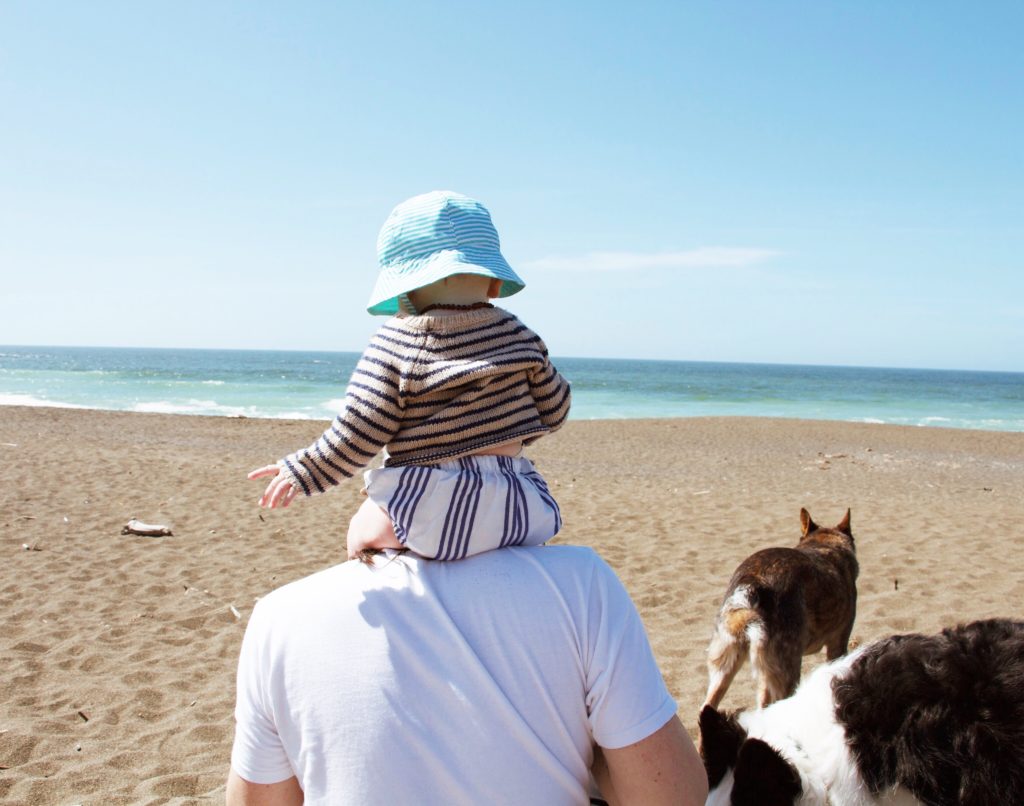
Every dog is different and responds in their own way
Having two very different dogs with two very distinct personalities provided insight into how dogs can respond differently to the same situation. Jack (Australian Cattle dog) has always been keenly aware of changes to his environment. He’s whip smart and the first to notice a slight fluctuation in intonation that might suggest any emotion other than happiness. He works best with structure and routine to keep his anxieties at bay. If Jack is Ying, our Border Collie, Keeper, is Yang. She is energetic and wild, fiercely intelligent though seemingly unaffected by much. She prefers transactional exchanges (throw the ball!) and is generally the carefree and go-with-the-flow type.
When we brought our daughter home, the initial reactions to her were mixed. Jack was standoffish, studying her from afar with body language that showed he was unsure. Keeper showed a much more casual interest. She sniffed her for a few minutes, then brought us a frisbee to throw as if to say “Cool. Throw this” (ha). We quickly learned that our dog’s needs would be different when it came to them adjusting to having a new baby around. Jack was going to need more positive interactions to reassure him and make him feel comfortable to the new changes that were happening in his environment. Keeper on the other hand would just need the everyday activities she was used to to stay the same.
“Understanding your dog’s personality will help when
knowing how best to address their needs individually.”
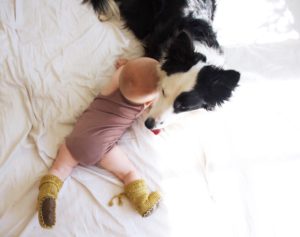
Establishing boundaries and a new routine before the baby arrives will reduce stress
We knew we wanted to have our daughter sleep in the bedroom with us for the first few months, and that meant keeping the dogs out of the bedroom at night. They had always had free range to the house, so these were new boundaries that would have to be established. A few months before she arrived, we purchased some floor pillows for the dogs and created a cozy corner in the living room. We introduced the command “Out” if they came in the bedroom, and when they left the room we would say “Thank you, guys.” After a few weeks of enforcing the boundary consistently, we noticed the dogs waiting outside the room as if there was an invisible line they couldn’t cross. We made sure to reward the behavior with positive affirmation anytime we noticed them doing this.
Keep the routine
Once you’ve established the new routine with boundaries, make sure to stick with it – especially after the baby comes. The consistency and structure will really help with your dog’s (and yours) stress levels. If you think you might be too overwhelmed, you can always hire a dog walker to make sure they get their walks in.
“Making a conscious effort to keep doing the activities that have long been a part of their every day routine (feeding at a specified time, going on walks at a certain time) will help them stay balanced and feel like their needs aren’t being ignored.”
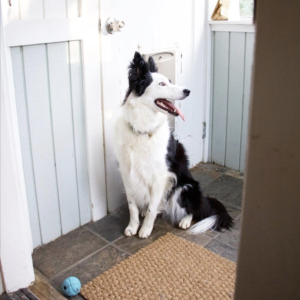
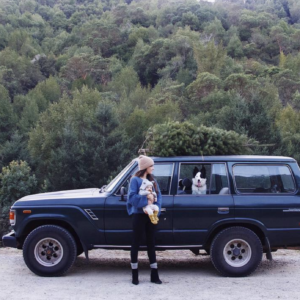
Reduce negative associations to the baby
Reducing the amount of negative associations your dog has towards the baby will help them view the new addition more positively. For instance, waiting until the baby arrives to enforce strict boundaries they aren’t used to might lead to thinking things like “Now that the baby is here, I have to stay out of the bedroom.” This way of thinking can lead them to develop anxiety around not knowing where they fit in, or even give a reason to harbor some resentment towards the new baby. Instead, having the already established norm of “The bedroom is off limits” takes the guesswork out of the situation for your dog.
Foster a positive association to the baby once he or she arrives
One of the things I found myself doing as a new mom was (instinctively) devoting all of my attention to the baby. Then once she was down for a nap, I would play with the dogs. This was creating a situation where the dogs felt separate from her and I, and even lead to competition for my attention at times. I realized this was the wrong approach.
“I needed to be actively creating a more inclusive environment
where the dogs didn’t feel as though the only time they got my
attention was when she wasn’t around.”
This is a hard one, especially when you’re running on little sleep and going through all the crazy adjustments that come with new parenthood! Reminding myself daily that putting in the work now would make things easier later really helped. I also had a few new toys ready to give the dogs when we came home from the hospital just to sweeten the deal. Or was it a peace offering? Either way, ZippyPaws has some great options.
[blog_image]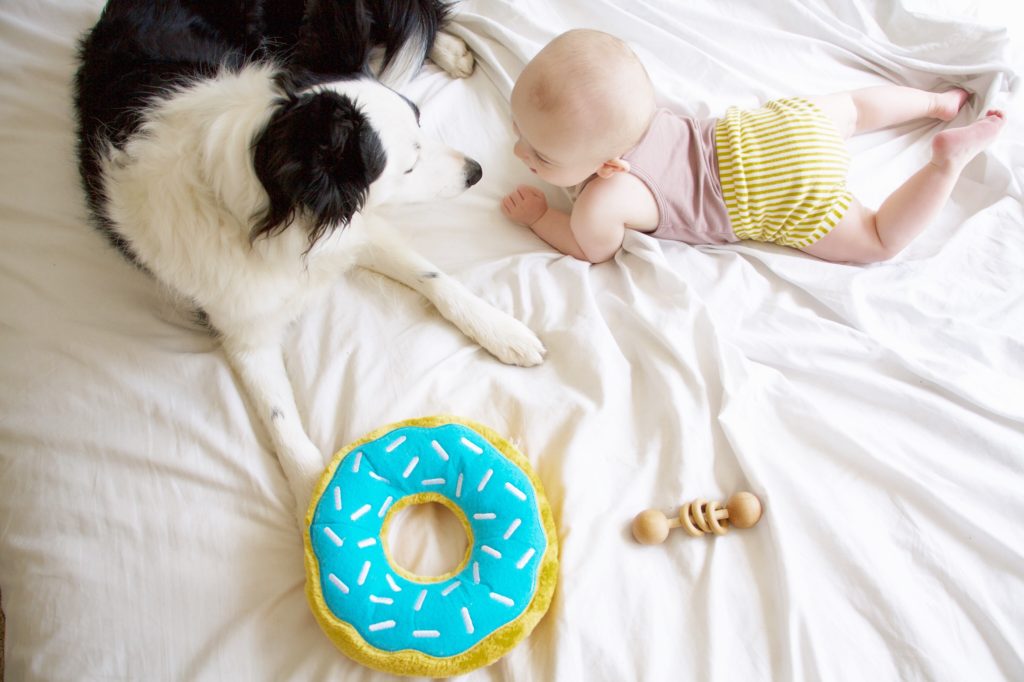
Be conscious of your energy
Dogs look to us for leadership, so when we’re stressed it can lead them to be stressed too. Dogs work off our non-verbal and verbal cues to understand what is expected of them. Being conscious of your tone and volume can really help to lessen your dog’s (and everyone around you) stress. Parenting is stressful at times, there’s no way around that. But reminding yourself to be conscious of the vibe you’re putting off will only help the situation.
Have realistic expectations and give it time
As they say, Rome wasn’t built in a day. Neither are positive, balanced relationships – which is ultimately what you’re striving for when you introduce your new baby to your dog. You want everyone to get along and coexist in a warm, happy home. But like with any relationship, it’s a process that requires time, work, and maintenance. Doing your best to facilitate a positive connection will help move you towards that goal.
“And if things are rocky, taking a step back and knowing this is just a small portion of a larger picture can put things into perspective.”
[blog_image]
If things aren’t working, consult a professional
There are instances where no matter how many positive associations you make, or how inclusive an environment you create is, you find yourself in a situation where things are just not working. Reactive behaviors like nipping and growling that endanger your baby’s well being, incessant barking that hinders sleep, or other challenging behaviors that contribute to stress in the home is not healthy for anyone. In these cases, consulting a Dog Behavior Specialist (a Veterinarian who also specializes in behavior), or a Dog Trainer who has experience working with dogs and changing family dynamics, would be your next move. One book I have found to be really helpful on this subject was Good Dog, Happy Baby.
The early days of bringing a baby home are a sensitive time for everyone involved. With lots of trial and error! However, we learned that the work early on was totally worth it. Things operate pretty much like clock-work around our house now. The dogs love our daughter and respect the boundaries we’ve put in place, and in return our daughter loves them too. Now we’ve moved on to new important lessons like teaching our daughter how to be “gentle” when petting the dogs, as to not pull large clumps of hair off their bodies – which is a whole new feat! Or, the command “No licking” for when the dogs decide to love on our daughter a little too much. Having a zoo (family) keeps you on your toes, and there are always new things to learn and adjustments to be made.
But that’s the beauty of it, right?
About the author: Nicole Lee is mother to new baby girl, Zoo Keeper to two herding dogs and an old sweet cat, and Writer of the blog Wildlandia.com.
Find her on Instagram: @wildlandia
